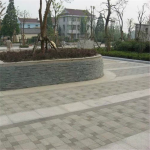Introduction
Travertine has long been celebrated for its natural beauty and versatility in architectural and design applications. However, the rise of cultured travertine has revolutionized the way we think about this timeless stone. In this comprehensive article, we will delve into the world of cultured travertine, exploring its origins, production process, characteristics, applications, and the many benefits it offers to homeowners, designers, and builders alike.
ledge stone for sale of Cultured Travertine
Travertine is a form of limestone that is typically found near mineral springs or hot springs. It is formed over thousands of years through the deposition of minerals, resulting in its distinctive texture and color variations. Cultured travertine, also known as cast stone or faux travertine, is a man-made product designed to replicate the natural beauty of travertine through a carefully controlled manufacturing process.
The Production Process
Cultured travertine is created by mixing natural stone aggregates, cement, and other proprietary ingredients to form a slurry that is poured into molds. These molds are carefully designed to mimic the unique patterns and textures of natural travertine. Once the mixture has set and cured, the resulting product is cut into tiles, slabs, or other architectural elements.
Unlike natural travertine, which can vary in color and veining from one piece to another, cultured travertine offers consistent color and pattern options. This allows for greater control over the final aesthetic of a project and ensures a uniform appearance throughout.
Characteristics of Cultured Travertine
Cultured travertine shares many of the same characteristics as natural travertine, including its durability, strength, and versatility. It is resistant to heat, moisture, and wear, making it an ideal choice for a wide range of indoor and outdoor applications. Cultured travertine is also lightweight compared to natural stone, which can simplify installation and reduce structural requirements.
One of the key advantages of cultured travertine is its flexibility in design. Manufacturers can create custom colors, shapes, and sizes to meet the specific requirements of a project. This allows for greater creativity and customization in architectural and design applications.
Applications of Cultured Travertine
Cultured travertine can be used in a variety of architectural and design applications, both indoors and outdoors. Its versatility and aesthetic appeal make it a popular choice for residential, commercial, and public spaces. Some common applications of cultured travertine include:
1. Flooring: Cultured travertine tiles are a popular choice for flooring due to their durability and timeless beauty. They can be installed in entryways, kitchens, bathrooms, and other high-traffic areas.
2. Wall Cladding: Cultured travertine panels can be used to create stunning feature walls in both interior and exterior spaces. Their natural texture and warm tones add depth and character to any design.
3. Countertops and Vanities: Cultured travertine countertops and vanities offer a luxurious and sophisticated look for kitchens and bathrooms. The material is heat and scratch-resistant, making it ideal for use in these spaces.
4. Fireplaces: Cultured travertine can be used to create elegant fireplace surrounds and mantels, adding a touch of sophistication to any living room or outdoor living area.
5. Outdoor Pavers: Cultured travertine pavers are an excellent choice for patios, pool decks, and other outdoor areas. They are slip-resistant, durable, and easy to maintain, making them a practical and stylish option for outdoor living spaces.
Benefits of Cultured Travertine
Cultured travertine offers a range of benefits that make it a preferred choice for architects, designers, and homeowners. Some of the key benefits of cultured travertine include:

1. Cost-Effective: Cultured travertine is typically more affordable than natural stone, making it a cost-effective alternative for those looking to achieve the look of travertine on a budget.
2. Consistent Quality: Cultured travertine offers consistent color, pattern, and quality, ensuring a uniform appearance across all pieces. This consistency can be particularly important in large-scale projects where a cohesive design is desired.
3. Low Maintenance: Cultured travertine requires minimal maintenance compared to natural stone. It is easy to clean and does not require sealing or special treatments to maintain its appearance.
4. Eco-Friendly: Cultured travertine is a sustainable choice for environmentally conscious consumers. By using recycled materials and minimizing waste during production, cultured travertine helps reduce the environmental impact of construction and design projects.
5. Versatility: Cultured travertine can be customized to meet the unique requirements of any project. From custom colors and sizes to intricate patterns and textures, the possibilities are endless with cultured travertine.
Conclusion
Cultured travertine represents a harmonious blend of natural beauty and modern innovation. With its durability, versatility, and aesthetic appeal, cultured travertine has become a popular choice for a wide range of architectural and design applications. Whether used for flooring, wall cladding, countertops, or outdoor pavers, cultured travertine offers a cost-effective and sustainable alternative to natural stone. As the demand for sustainable and customizable building materials continues to grow, cultured travertine is poised to remain a timeless and elegant choice for years to come.
